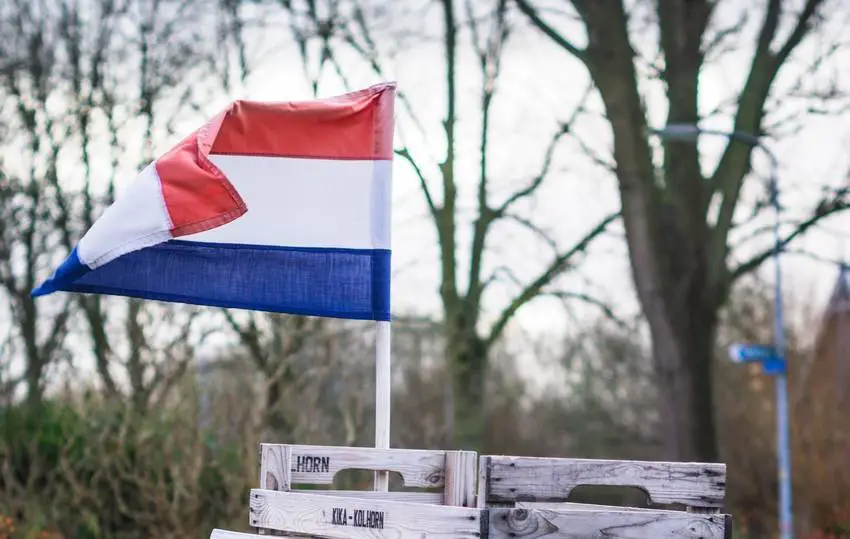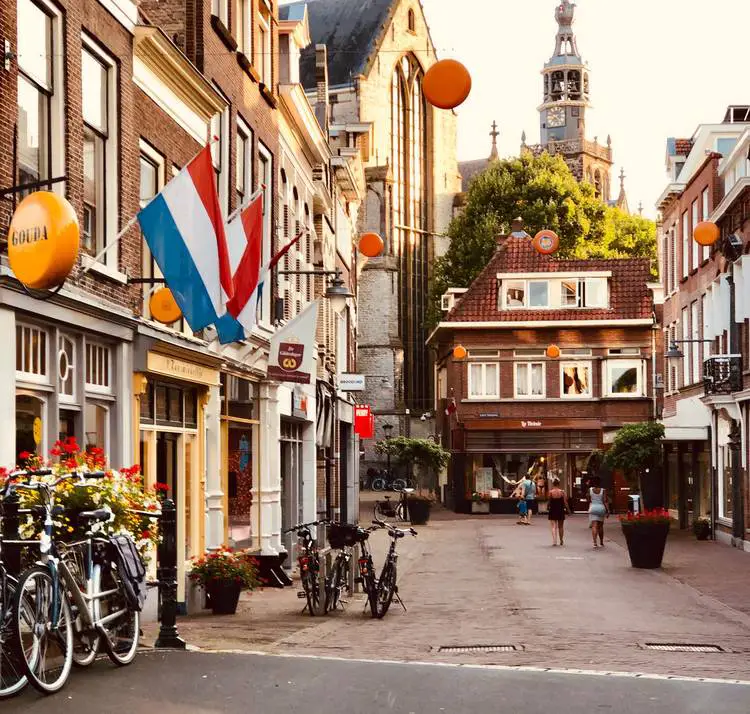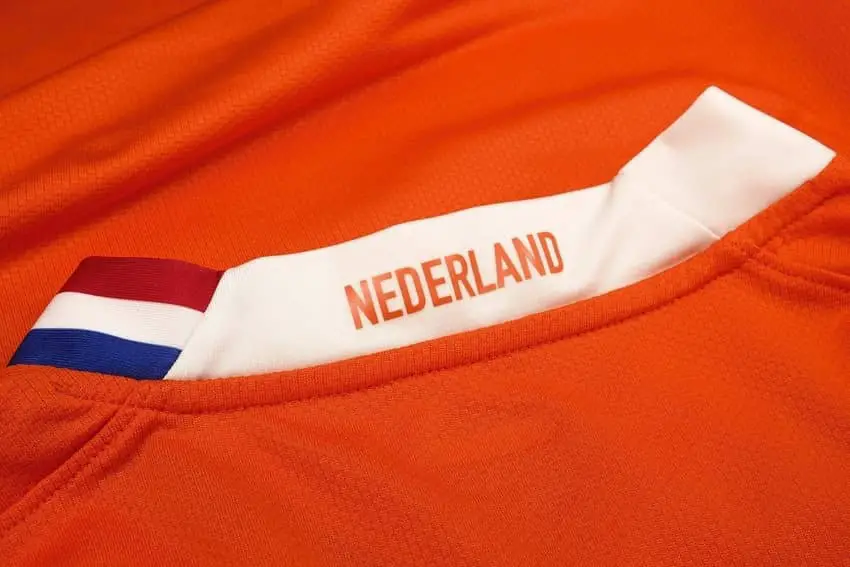Once you have spent some time in the Netherlands, you will realise that their official colour is orange. Moreover, their football team is also represented by the colour orange and whenever there is a national celebration, everybody dresses in that colour and all the streets shine with bright tones of orange.
When the Netherlands gained independence from the Spanish Empire, the colours used by their soldiers were blue and white. Therefore, these colours represent the arms of the soldiers fighting that war. Nowadays red used to be orange because of the Prince of Orange. Its change to red is uncertain.

Even though the colours of the flag are these, what Dutch citizens feel like their own and embrace is definitely the orange. If you want to know more about this dynasty, the origin of these colours and the creation of the flag, among other interesting facts, keep on reading.
Red, White and Blue: a Little Bit of History
As a result of history, flags have been changing and developing through the years, becoming what they are right now because of events and facts that have changed the history of each country.
In the case of the Netherlands, there is the doubt of why are the colours of the flag so different from the colour Dutch people identify with themselves: orange.

To start with, the Netherlands is a monarchic democracy, which means that besides being a country with their own chosen Government, there is the figure of a King that represents the country to the rest of the world. In the case of the Netherlands, this monarchy was also chosen by the Dutch citizens back in the day when the Prince of Orange, Willem I, helped the Lower Lands gaining their independence from the Spanish Empire at the beginning of the 17th Century.
Before these events, the Netherlands was considered a Republic but after the help and involvement in the well-being and safety of their fellow citizens, the Monarchy of Orange was established.
Since Willem I, his heirs have inherited not only the title of Orange but also the family title of Nassau. Nowadays, the current King of the Netherlands, Willem Alexander, belongs to the House of Orange-Nassau.
Times of War
The Netherlands as we know it was founded in 1648 after one of the most meaningful historic periods: the Eighty Years War (from 1568 until 1648), a year against the Spanish who were occupying the territory of the Southern Provinces of the Netherlands.
The Netherlands finally became independent in 1648 after the Peace of Westphalia. During this peace that lasted several months, many many topics were addressed and many treated were signed. Among these, and even though the Netherlands claimed its independence in 1581, this treated declared all these provinces free and no longer belonging to Spain.

It is also during this period that the territories that conformed Flanders were divided in two, a part belonging to the Netherlands and another part belonging to the Spanish, that nowadays represent the Flemish-speaking part of Belgium.
It is because of this that in that area of Belgium they speak a language that is basically similar enough to Dutch to be considered Dutch. If you want to know more about this, read more here.
Moreover, it is important to mention the fact that this war was not only territorial but the change of the faith and believes of the Dutch citizens changed their beliefs with the new Reformation move, which made most of them become Calvinists.
Like most wars during the Medieval Ages, there was a religious motive behind all the war. Besides, it is important to mention that even though the Netherlands is one of the most tolerant countries in the world, including the tolerance of religion and faiths, the Monarchy is openly Calvinistic and any new member of the Royal Family has to convert into Calvinism.
The Spanish Kingdom was one of the main representer of the Holy Roman Empire, Holy under the recognition of the one and only Catholic Church. Nowadays, Belgium (and Flanders) has a majority of Catholic citizens.
Importance of the Orange-Nassau Family
Back in the day, the role of the Royal Family in the Netherlands represented the unity of several independent provinces that wanted a common Government in order to decide independently what they wanted. It is because of this that nowadays the Dutch Royal Family, unlike other monarchies in the world, doesn’t have any of the powers of the Government (executive, legislative, judicial or the army) but only a representative one.
The Dutch Monarchy has a strong feeling of unity and proud of the country, that helps create a Government with stability: thanks to the Polder Model that also applies to the way Dutch do politics, the role of the King is crucial for it to work.
Representing them and the importance they have for the country and for the stability of the system to keep working, we have the orange in the flag.
The current flag we all know has red-white-blue, a tricolour flag that is called the Statenvlag made official by a royal decree in 1937. However, back in the day, the Prinsenvlag, representing the Monarchy in it had orange and a lighter blue.
Flag: New Colours
It is unknown why the colours of the flags have been changing through the years and there are many cases in history where flags have been updated.
This is also the case of the Netherlands, whose flag has changed from orange to red and from light blue to dark blue. As I was explaining before, the white and blue represent all those soldiers fighting for the independence of their motherland during those 80 years of war with the Spanish.
The orange colour was in honour of the Orange family, however, even though nobody knows exactly why this colour has been changed into a vermillion red is because no monarchy and no king will ever have enough power to be considered the head of state of the Netherlands, which would symbolically show in the flag: it is a recognition yet not a power.
Meaning of Orange for the Netherlands
All in all, the flag works as a representation of a state with a political connotation, whereas a colour that identifies the culture and unity of a country can be something else: this is the case of the Netherlands.
The role of the monarchy and the colour orange that represents them is exactly to create unity and a sense of belonging to the whole nation and not to rule on top of them but to give them a good sense of culture and unity like they did in the 17th century.
The colour orange has become famous because of several occasions and events when Dutch people have used orange as a symbol for them and has been adopted as the colour of the Dutch for the rest of the world. This is why we may think the flag should be orange.

- Football: this sport is one of the main ways of showing the rest of the world a nation and what this can do. In the case of the Netherlands, the national time is known by Argentinians as the Clockwork Orange, lethal and strong. Football fans from all over the nation dress in orange like the official uniform of the players (which is also blue and white). It is a good way of showing a nation and a culture.
- Kings Day: if you are in the Netherlands at the end of April there is no way you can miss Koning’s Dag, the birthday of the king and one of the main celebrations for the whole nation, who go out of their houses all dressed up from head to toe in orange.
Orange Carrots: Orange-Nassau
Did you know that carrots were never orange? They used to be blue-purple or yellow and these were genetically modified by Dutch people in order to honour their monarch, House of Orange.

It was after the revolution and their victory that in order to commemorate the end of such a nightmare, and since William from Nassau inherited the rule of Orange before the revolution, the name gave place for that colour.
Dutch being always good farmers and experts in it try to develop a new breed of carrot different to the white, purple or yellow time adding beta-Carotene, the content that makes carrots and other veggies orange. This was a tribute to William of Orange and they started mass growing this new type as a commemoration of their new nation.
This is something I discovered right before moving to the Netherlands and it is a shocking reality, we are all influenced by Dutch politics and history from the moment we start eating 😉
All in All…
- Red used to be Orange, represents the monarchy and the new beginning as an independent nation.
- Blue can also be the river, canals and the importance of the sea and the sky, but it is part of the uniform soldiers would be used fighting for independence.
- White is also par of colour used by the soldiers who fought the independence yet it may also represent with blue the land, the sky.